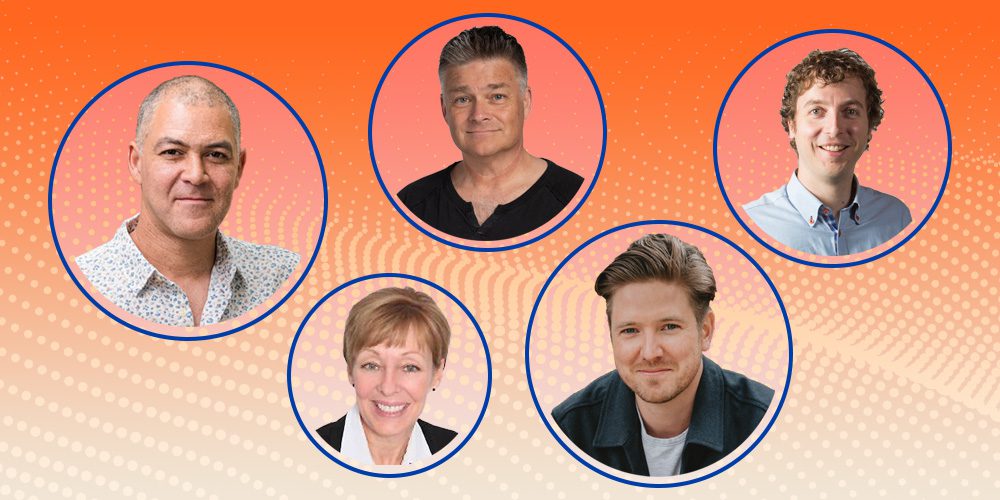Home » 5 AI experts on how to think about ChatGPT
5 AI experts on how to think about ChatGPT

This new generation of AI will change everything — but not as much as you might expect.
ChatGPT has taken the world by storm. In just a few weeks, the application, which creates strikingly human-like content, has written a press release for the Pentagon, waxed philosophical with journalists, almost passed a bar exam, and — perhaps most human of all — produced mediocre poetry.
Of course, AI is not new. It has been recommending music, selecting streaming shows and guiding people from A to B for years. But while conventional AI can help you compose a professional-sounding email, ChatGPT can write an entire article on workplace communication.
“It’s absolutely game-changing,” says Robert Clapperton, a professor at Toronto Metropolitan University who studies language-processing artificial intelligence. “The difference in what can be produced is night and day.”
ChatGPT works on a form of artificial intelligence called a large language model. These systems look at the internet to see how a particular topic is described and use that information to construct new sentences. “It’s basically math,” says Clapperton. “If you ask what it did last weekend, obviously it didn’t do anything. But it knows the context around that question and what’s possible, so it might say it went to the movies.”
The hype level is stratospheric. Analysts at UBS believe that ChatGPT gained more than 100 million users within three months of its launch in November. Microsoft, which has invested heavily in ChatGPT-maker OpenAI, is integrating similar technology into its Word and Excel products. Google is working on its own version, called Bard. But how will these technologies actually change how we live, learn and work? We asked the experts.

Robert Clapperton is a professor at Toronto Metropolitan University and co-founder of education tech company Ametros Learning.

Osh Momoh is former chief technical advisor at MaRS.

Graham Taylor is a professor of engineering at the University of Guelph and research director at the Vector Institute for Artificial Intelligence.

Cathy Pillar is CEO of Ametros Learning.

Mike Murchison is CEO of customer service tech company Ada.
Today’s search engines will go the way of dial-up internet
Though search engines have come a long way since Google hit the world wide web in 1998, users still need to sort through 30 results to find the best answers. “The idea of doing a search and getting a list of pages is going out the window,” says Clapperton. Large language models will be able to synthesize what came up in the search into a single result. “It’s going to be Wikipedia on steroids,” he says. “Large language models are going to be an intermediary for much of what we see on the internet.”
Osh Momoh, former chief technical advisor at MaRS, agrees. “These new tools have question-answering capability. Though it’s not super accurate yet, it’ll keep getting better and will become embedded into many interfaces we’re used to seeing today.”
Case in point: over a million people have joined the waitlist for Microsoft’s AI-infused version of its previously unloved search engine, Bing.
Inspiration will be on-demand, but humans will still be the creatives
“These tools are going to be great assistants,” says Momoh. “People will quickly accept that this tool can be used as a starter to, say, help with a first draft of an article or to summarize three pages of information and then use that as grist.”
Momoh says it could also be used to take on parts of writing or visual art that are more mechanical and don’t necessarily need as much creativity, in the same way that tools like spelling and grammar checkers are accepted today.
The technology can also be used for coding. Engineers have already been using ChatGPT to come up with new solutions to problems, review their code or explain how a program works. “More mechanical elements of software development will just get delegated to machines,” Momoh says.
Educators will adapt
Nowhere has the potential of large language models caused as much consternation and confusion as the classroom. Several schools in the U.S. were quick to ban ChatGPT and some even reverted to having students write essays by hand until they could understand how it works. But now that this new kind of AI is out, it can’t be put back in its box.
“I’m 100 percent comfortable with it being used in the classroom if it’s disclosed,” says Graham Taylor, a professor of engineering at University of Guelph and research director of the Vector Institute for Artificial Intelligence. “We shouldn’t limit the tools, but it’s good if the professor is aware to take away any advantage one student might have over another student,” he says. “My policy is that, like when they collaborate with another student, they have to let me know if they collaborate with ChatGPT.”
AIs that mimic human dialogue also have more educational uses than just helping time-pressed undergrads churn out a passable essay. Ametros Learning, a company co-founded by Clapperton and Cathy Pillar, is using large language models to create realistic characters for training exercises. Its platform is being used by University of Waterloo’s School of Pharmacy to develop a virtual clinic that gives students experience of interacting with AI patients to manage their blood-thinning medications.
Pillar, who is Ametros’ CEO, says large language models have allowed them to create artificially intelligent personas that are realistic enough to handle these scenarios. “We can make the character difficult to deal with, or somebody who has a cognitive issue or is just really happy-go-lucky, and so you create this diversity of experience for learning and assessment,” she says.
Chatbots will get chattier
Large language models can also be used to help chatbots understand a greater range of questions and seem less robotic. But while new kinds of AI could make automated interactions feel more natural, businesses will have to think carefully about how they integrate them with other systems to turn that talk into action. After all, when you call up a company you normally want it to do something, not just have a nice chat.
“AI is a tool that’s helping us help businesses automatically resolve the most common queries with the least effort,” says Mike Murchison, CEO of Ada, a Canadian tech firm that has been using large language models to build customer service chatbots since 2019. “But to actually improve the customer support experience it needs to be combined with other tools.”
Murchison believes conventional customer support roles will gradually be replaced by agents who will be mostly managing AI systems rather than responding to clients directly. “Overall there will be more jobs created as a result of that,” he says. “But it’ll be a fundamental skill set shift that we’ll see in this industry and that’ll probably be true across other industries.”
MaRS believes “innovation” means advancing Canadian technology for the benefit of all people. Join our mission.
Photo credits: Handout
MaRS Discovery District
https://www.marsdd.com/
MaRS is the world's largest urban innovation hub in Toronto that supports startups in the health, cleantech, fintech, and enterprise sectors. When MaRS opened in 2005 this concept of urban innovation was an untested theory. Today, it’s reshaping cities around the world. MaRS has been at the forefront of a wave of change that extends from Melbourne to Amsterdam and runs through San Francisco, London, Medellín, Los Angeles, Paris and New York. These global cities are now striving to create what we have in Toronto: a dense innovation district that co-locates universities, startups, corporates and investors. In this increasingly competitive landscape, scale matters more than ever – the best talent is attracted to the brightest innovation hotspots.


